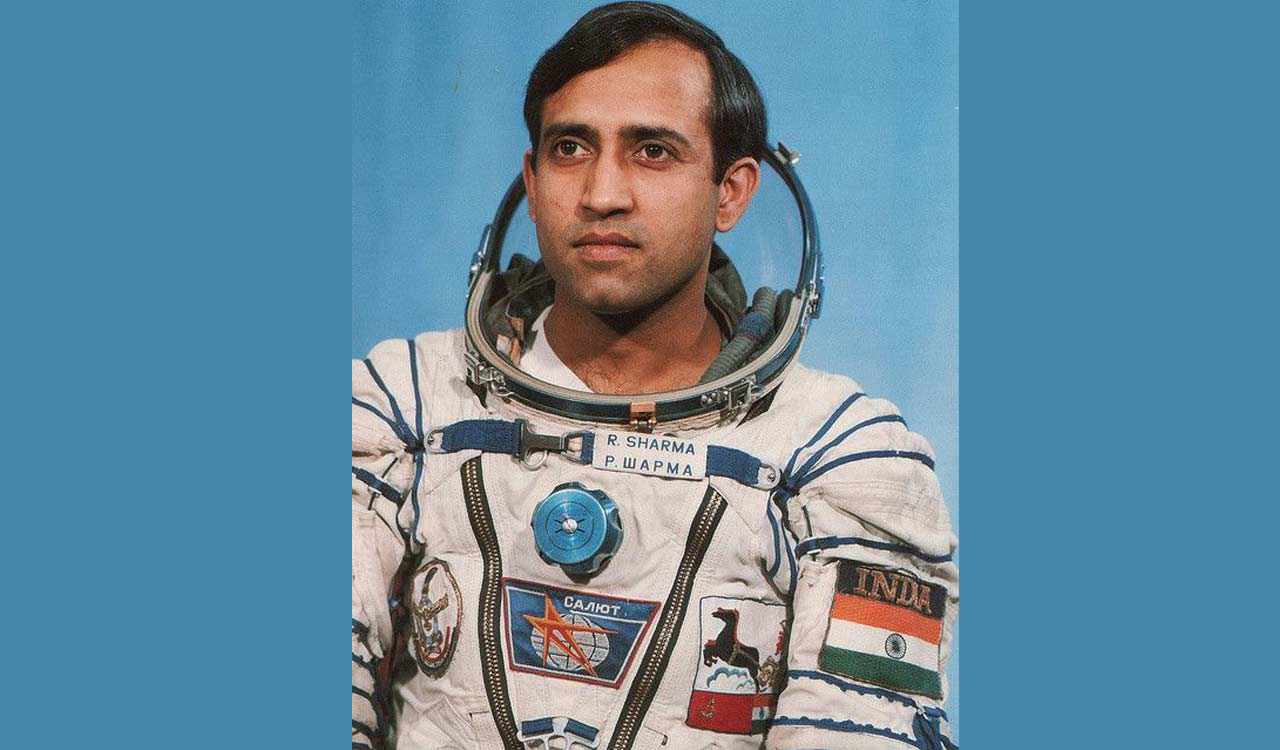India's First Astronaut, Rakesh Sharma: His Journey And Present Endeavors

Table of Contents
Rakesh Sharma's Path to Becoming India's First Astronaut
Early Life and Career
Rakesh Sharma's journey to becoming India's first astronaut began with a strong foundation in academics and a passion for aviation. He was born on January 13, 1949, and after completing his education, he joined the Indian Air Force, embarking on a distinguished career as a fighter pilot.
- Pilot Training: He underwent rigorous pilot training at the Air Force Academy, showcasing exceptional skills and dedication.
- Flying Experience: He accumulated significant flight hours, demonstrating his expertise and preparedness for demanding aerial missions.
- Selection Criteria: His selection for the space mission was based on stringent criteria, including physical fitness, mental fortitude, and exceptional piloting skills. The Indian Air Force, in collaboration with the Soviet space program, meticulously screened candidates.
Selection and Training
The selection process to become India's first astronaut was highly competitive. From a pool of talented candidates, Rakesh Sharma emerged as the top choice. His subsequent training in the Soviet Union was incredibly demanding, preparing him for the unique challenges of spaceflight.
- Extensive Training: The training program at Star City, the cosmonaut training center near Moscow, involved extensive physical, psychological, and technical preparation.
- Physical Training: This included rigorous physical conditioning, designed to withstand the physical stresses of launch, weightlessness, and re-entry.
- Psychological Training: Psychological evaluations and training were crucial, preparing him to handle the intense pressure and isolation of spaceflight.
- Technical Training: He mastered the intricacies of the Soyuz spacecraft, the Salyut 7 space station, and the various scientific experiments he would conduct in orbit.
The Historic Soyuz T-11 Mission
The Mission Details
The Soyuz T-11 mission, launched on April 3, 1984, marked a significant milestone in India's space exploration history. Rakesh Sharma was a part of a three-person crew, alongside Soviet cosmonauts Yuri Malyshev and Gennady Strekalov.
- Launch Date: April 3, 1984.
- Docking Procedure: The Soyuz spacecraft successfully docked with the Salyut 7 space station, the primary objective of the mission.
- Experiments Conducted: During the eight-day mission, Sharma conducted several experiments focused on remote sensing and the effects of spaceflight on the human body. These experiments were crucial for gathering valuable data and advancing India's scientific understanding of space.
Experiences in Space and Notable Observations
Rakesh Sharma's experiences in space were transformative. He witnessed the breathtaking beauty of Earth from orbit and overcame the challenges of weightlessness.
- Weightlessness: He adapted remarkably well to the challenges of weightlessness, performing his duties effectively in the microgravity environment.
- Views of Earth: His descriptions of the Earth's curvature and the delicate beauty of our planet inspired many and underscored the importance of environmental conservation.
- Scientific Experiments: He meticulously carried out the assigned scientific experiments, contributing valuable data to the mission's objectives.
- Communication with Ground Control: Maintaining clear communication with ground control was crucial, allowing for real-time monitoring and support throughout the mission. His communication skills were exemplary.
Rakesh Sharma's Post-Mission Life and Contributions
Return to Earth and Recognition
Upon his return to Earth, Rakesh Sharma was greeted as a national hero. His extraordinary achievement ignited national pride and inspired a generation of Indians.
- National Reception: He received a warm welcome and widespread public adoration upon returning to India.
- Awards and Accolades: He was awarded numerous prestigious accolades, including the Ashoka Chakra, India's highest peacetime gallantry award, cementing his place in Indian history.
- Impact on National Pride: His success significantly boosted national pride and enhanced India's standing in the global space community.
Continued Service and Current Endeavors
Following his space mission, Rakesh Sharma continued to serve in various capacities, leveraging his expertise and experience. He remains actively involved in promoting STEM education and inspiring young people to pursue careers in science and technology.
- ISRO Involvement: Though his exact role isn't publicly detailed, his legacy undoubtedly continues to influence ISRO's programs.
- Advocacy Work: He has actively participated in promoting space exploration and STEM education in India.
- Public Speaking: He frequently engages in public speaking engagements, inspiring aspiring astronauts and scientists.
- Contributions to STEM Education: He actively promotes STEM (Science, Technology, Engineering, and Mathematics) education through various initiatives.
Rakesh Sharma's Legacy and Impact on India's Space Program
Inspiration for Future Generations
Rakesh Sharma's journey serves as an enduring source of inspiration for aspiring scientists and astronauts across India. His story motivates young people to pursue careers in STEM fields and contribute to the nation's scientific advancement.
- Influence on STEM Education: He has significantly influenced STEM education by inspiring a new generation of scientists and engineers.
- Role Model: He became a role model for many young Indians who dream of space exploration and scientific innovation.
- National Pride and Scientific Advancement: His achievements have profoundly impacted national pride and significantly contributed to India's scientific advancements.
Long-Term Effects on Space Research in India
Rakesh Sharma's mission laid a strong foundation for India's subsequent space exploration endeavors. His experience and expertise have been invaluable in shaping the country's space research program.
- Influence on ISRO Policies and Programs: His experience and knowledge have influenced ISRO policies and programs, leading to continuous advancements.
- Impact on Space Technology Development: His mission spurred innovation and technological advancements in India's space sector.
Conclusion
Rakesh Sharma's journey, from a dedicated Indian Air Force pilot to India's first astronaut, is a testament to human ambition and perseverance. His historic Soyuz T-11 mission not only etched his name in history but also significantly advanced India's space program. His continued contributions to STEM education and advocacy work ensure his legacy will continue to inspire future generations. Learn more about the incredible life and legacy of Rakesh Sharma, India's first astronaut, and discover the inspiring story behind his pioneering journey into space. Explore the rich history of India's space exploration and the ongoing advancements in this crucial field. Celebrate the achievements of India's first astronaut and his enduring contribution to space exploration.

Featured Posts
-
 Analysts Reset Palantir Stock Forecast Understanding The Recent Rally
May 09, 2025
Analysts Reset Palantir Stock Forecast Understanding The Recent Rally
May 09, 2025 -
 Kilmar Abrego Garcia From El Salvador Gang Violence To Us Political Flashpoint
May 09, 2025
Kilmar Abrego Garcia From El Salvador Gang Violence To Us Political Flashpoint
May 09, 2025 -
 Aeroport Perm Zaderzhki Reysov Do 4 00 Iz Za Snegopada
May 09, 2025
Aeroport Perm Zaderzhki Reysov Do 4 00 Iz Za Snegopada
May 09, 2025 -
 Stock Market Today Sensex Nifty Close Higher Ultra Tech Cement Dips
May 09, 2025
Stock Market Today Sensex Nifty Close Higher Ultra Tech Cement Dips
May 09, 2025 -
 Prediction 2 Stocks Outperforming Palantir In 3 Years
May 09, 2025
Prediction 2 Stocks Outperforming Palantir In 3 Years
May 09, 2025
